The French manufacturer Crosscall is known for smartphones that are designed for rough conditions, offering waterproof bodies, shock resistance and long battery life. The latest model, the Action-X5, is no exception and is targeted at outdoor lovers and athletes. Inside the rugged housing, the Android OS is powered by a Snapdragon 662 chipset and the 5.45-inch display offers an HD+ resolution.
With an 48MP primary camera and a 13MP ultra-wide — no tele lens or bokeh mode — things look pretty simple in the camera department compared to some other devices in Crosscall’s price range. Let’s see how this rugged phone stacks up against more conventional competitors in the DXOMARK Camera test.
Key camera specifications:
- Primary: 48MP sensor, AF
- Ultra-wide: 13MP sensor, 120° field of view
- 1080p at 30fps
About DXOMARK Camera tests: For scoring and analysis in our smartphone camera reviews, DXOMARK engineers capture and evaluate over 3000 test images and more than 2.5 hours of video both in controlled lab environments and in natural indoor and outdoor scenes, using the camera’s default settings. This article is designed to highlight the most important results of our testing. For more information about the DXOMARK Camera test protocol, click here. More details on how we score smartphone cameras are available here.
Test summary
Scoring
Sub-scores and attributes included in the calculations of the global score.
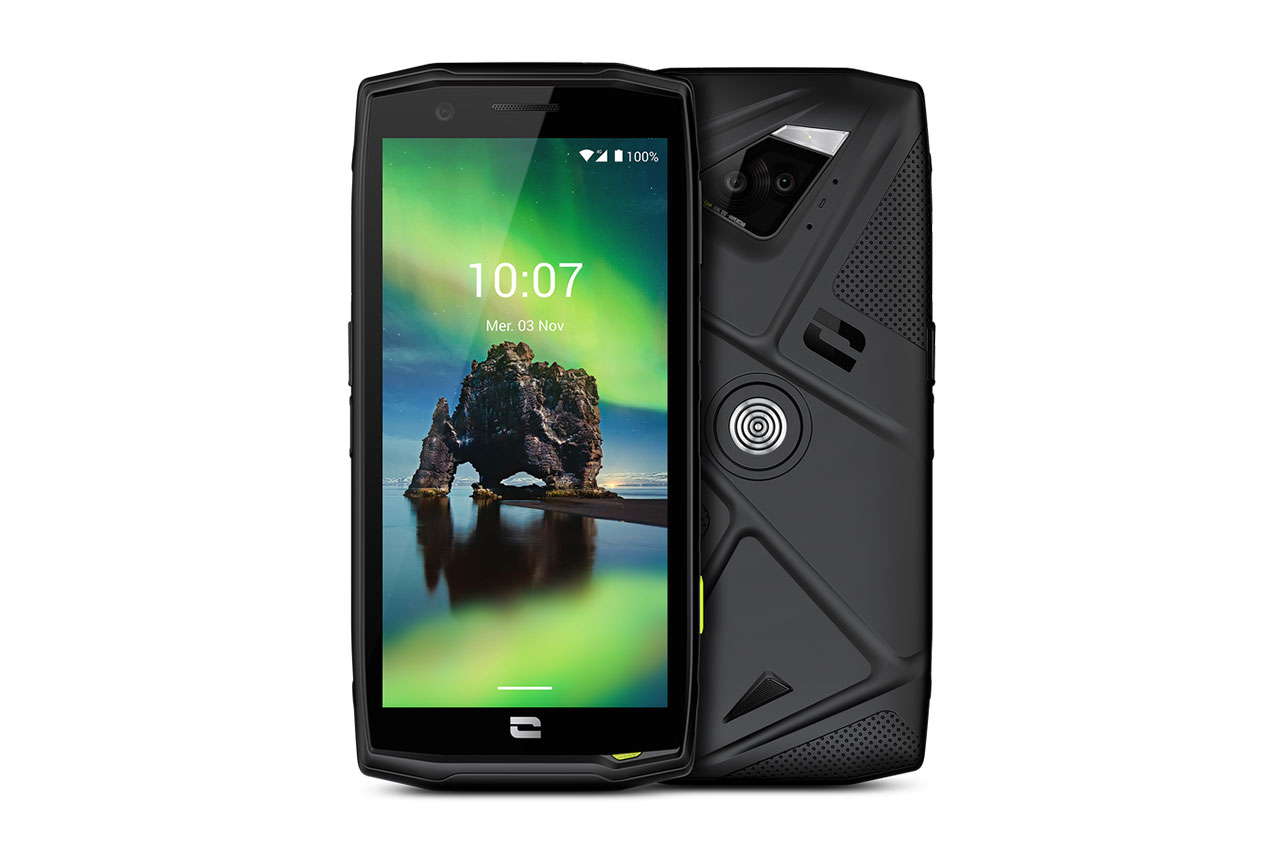 Crosscall Action-X5
Crosscall Action-X5

50
camera
62
Huawei Pura 70 Ultra
Best: Huawei Pura 70 Ultra (130)
51
Apple iPhone 16 Pro
Best: Apple iPhone 16 Pro (130)
76
Huawei Pura 70 Ultra
Best: Huawei Pura 70 Ultra (125)
80
Xiaomi 15 Ultra
Best: Xiaomi 15 Ultra (125)
67
Huawei Pura 70 Ultra
Best: Huawei Pura 70 Ultra (117)
77
Xiaomi Redmi 12 5G
Best: Xiaomi Redmi 12 5G (82)
25
Huawei Pura 70 Ultra
Best: Huawei Pura 70 Ultra (85)
46
Apple iPhone 16 Pro
Best: Apple iPhone 16 Pro (93)
24
Xiaomi 15 Ultra
Best: Xiaomi 15 Ultra (128)
66
Huawei Pura 70 Ultra
Best: Huawei Pura 70 Ultra (122)
53
Oppo Find X8 Pro
Best: Oppo Find X8 Pro (116)
72
Oppo Find X8 Pro
Best: Oppo Find X8 Pro (120)
24
Huawei Pura 70 Ultra
Best: Huawei Pura 70 Ultra (120)
59
Oppo Find X6 Pro
Best: Oppo Find X6 Pro (118)
96
Apple iPhone 16 Pro
Best: Apple iPhone 16 Pro (120)
76
Xiaomi 12S Ultra
Best: Xiaomi 12S Ultra (86)
93
Apple iPhone 16 Pro
Best: Apple iPhone 16 Pro (119)
Use cases & Conditions
Use case scores indicate the product performance in specific situations. They are not included in the overall score calculations.
Outdoor
Photos & videos shot in bright light conditions (≥1000 lux)
Indoor
Photos & videos shot in good lighting conditions (≥100lux)
Lowlight
Photos & videos shot in low lighting conditions (<100 lux)
Friends & Family
Portrait and group photo & videos
Please be aware that beyond this point, we have not modified the initial test results. While data and products remain fully comparable, you might encounter mentions and references to the previous scores.
Position in Global Ranking

224
th
4. Apple iPhone 16 Pro Max
157
10. Apple iPhone 15 Pro Max
154
22. Honor Magic4 Ultimate
147
26. Apple iPhone 14 Pro Max
146
26. Motorola Edge 50 Ultra
146
26. Samsung Galaxy S25 Ultra
146
32. Samsung Galaxy S24 Ultra
144
34. Apple iPhone 13 Pro Max
141
34. Google Pixel 9 Pro Fold
141
38. Samsung Galaxy S23 Ultra
140
43. Tecno Camon 40 Pro 5G
138
45. Vivo X80 Pro (Snapdragon)
137
52. Samsung Galaxy S22 Ultra (Snapdragon)
135
52. Vivo X80 Pro (MediaTek)
135
59. Samsung Galaxy Z Fold6
133
59. Samsung Galaxy S24+ (Exynos)
133
59. Samsung Galaxy S24 FE
133
59. Samsung Galaxy S24 (Exynos)
133
69. Samsung Galaxy Z Flip6
132
70. Apple iPhone 12 Pro Max
131
70. Samsung Galaxy S22 Ultra (Exynos)
131
81. Samsung Galaxy Z Fold5
128
83. Asus Smartphone for Snapdragon Insiders
127
83. Samsung Galaxy Z Flip5
127
83. Samsung Galaxy S23 FE
127
88. Vivo X70 Pro (MediaTek)
126
92. Asus Zenfone 11 Ultra
125
92. Samsung Galaxy S22+ (Exynos)
125
97. Samsung Galaxy Z Fold4
124
100. Apple iPhone 11 Pro Max
122
105. Xiaomi Redmi Note 13 Pro Plus 5G
121
106. Samsung Galaxy Z Fold3 5G
120
106. Samsung Galaxy S22 (Exynos)
120
106. Xiaomi Redmi Note 13 Pro 5G
120
111. Xiaomi Redmi Note 14 Pro+ 5G
118
114. Apple iPhone 12 mini
117
114. Samsung Galaxy S21 Ultra 5G (Snapdragon)
117
114. Samsung Galaxy S21 FE 5G (Snapdragon)
117
114. Samsung Galaxy S21 5G (Snapdragon)
117
120. Vivo X60 Pro 5G (Snapdragon)
116
123. Motorola Edge 50 Neo
115
123. Samsung Galaxy S21+ 5G (Snapdragon)
115
123. Samsung Galaxy S21 Ultra 5G (Exynos)
115
133. Crosscall Stellar-X5
113
133. Xiaomi Redmi Note 12 Pro+ 5G
113
137. Samsung Galaxy Z Flip4
112
139. Samsung Galaxy Z Flip3 5G
111
139. Samsung Galaxy S21+ 5G (Exynos)
111
139. Samsung Galaxy S21 5G (Exynos)
111
144. Samsung Galaxy A55 5G
108
144. Vivo X60 Pro 5G (Exynos)
108
149. Samsung Galaxy A54 5G
107
150. Xiaomi Redmi Note 14 Pro 5G
106
153. Samsung Galaxy A35 5G
104
154. Motorola Edge 40 Neo
103
154. Xiaomi Redmi Note 14 5G
103
156. Xiaomi Redmi Note 12 Pro 5G
102
158. Motorola Edge 30 Pro
101
160. Apple iPhone SE (2022)
100
162. Motorola Moto g75 5G
96
168. Samsung Galaxy A34 5G
92
168. Samsung Galaxy A25 5G
92
172. Xiaomi Redmi Note 13 5G
91
174. Motorola Moto g85 5G
88
174. Samsung Galaxy A52s 5G
88
174. Samsung Galaxy A52 5G
88
178. Motorola moto g54 5G
85
178. Samsung Galaxy A33 5G
85
178. Samsung Galaxy A16 LTE
85
181. Honor Magic6 Lite (5300 mAh)
84
181. Xiaomi Redmi Note 14
84
184. Samsung Galaxy A15 5G
83
186. Samsung Galaxy A15 LTE
81
187. Samsung Galaxy A53 5G
79
189. Xiaomi Redmi Note 11 Pro 5G
78
191. Samsung Galaxy A16 5G
77
193. Motorola Moto G35 5G
75
193. Xiaomi Redmi Note 13
75
196. Honor Magic5 Lite 5G
74
198. Samsung Galaxy A23 5G
70
199. Xiaomi Redmi Note 12 5G
69
202. Motorola moto g34 5G
67
202. Samsung Galaxy A14 5G
67
204. Motorola Moto G62 5G
66
205. Xiaomi Redmi Note 11S 5G
65
207. Xiaomi Redmi Note 12
63
212. Honor Magic4 Lite 5G
61
214. Xiaomi Redmi Note 11
60
216. Crosscall Stellar-M6
59
223. Xiaomi Redmi 10 2022
51
225. Samsung Galaxy A22 5G
48
Position in High-End Ranking

35
th
10. Xiaomi Redmi Note 13 Pro Plus 5G
121
11. Xiaomi Redmi Note 14 Pro+ 5G
118
16. Xiaomi Redmi Note 12 Pro+ 5G
113
19. Samsung Galaxy A55 5G
108
20. Samsung Galaxy A54 5G
107
21. Apple iPhone SE (2022)
100
27. Samsung Galaxy A52s 5G
88
27. Samsung Galaxy A52 5G
88
29. Samsung Galaxy A53 5G
79
Pros
- Acceptable detail
- Good video exposure and white balance in bright light and indoors
Cons
- Frequent underexposure in photos
- Strong noise in photo and video, especially in low light
- Pink white balance cast in photos
- Limited dynamic range on primary and ultra-wide
- Unstable video exposure and autofocus
- Inaccurate white balance and color rendering in low light video
- Lack of detail in video
With a DXOMARK Camera score of 87 the Crosscall Action-X5 struggles to compete with the best devices in the High-end segment and achieves one of the lower scores in its class. Image noise is one of the main issues in both photo and video modes. There is no bokeh mode and without a dedicated tele lens, tele-zoom images have poor detail. Still, it might be a good choice for users who prioritize hardware durability over camera performance and who only occasionally take photos and videos in good light conditions.
In this outdoor image, the level of detail is acceptable but face exposure could be brighter and a limited dynamic range results in highlight
clipping in the brighter
background.
When recording still images, detail is generally acceptable, especially in bright scenes. However, our testers often observed underexposure and limited dynamic range results in highlight and shadow clipping. A pink white balance cast is usually noticeable and gets worse with decreasing light levels. In addition, image noise is quite intrusive, especially in low light. On the plus side, the lack of strong HDR processing and noise reduction means images are mostly free of fusion and loss of texture artifacts.
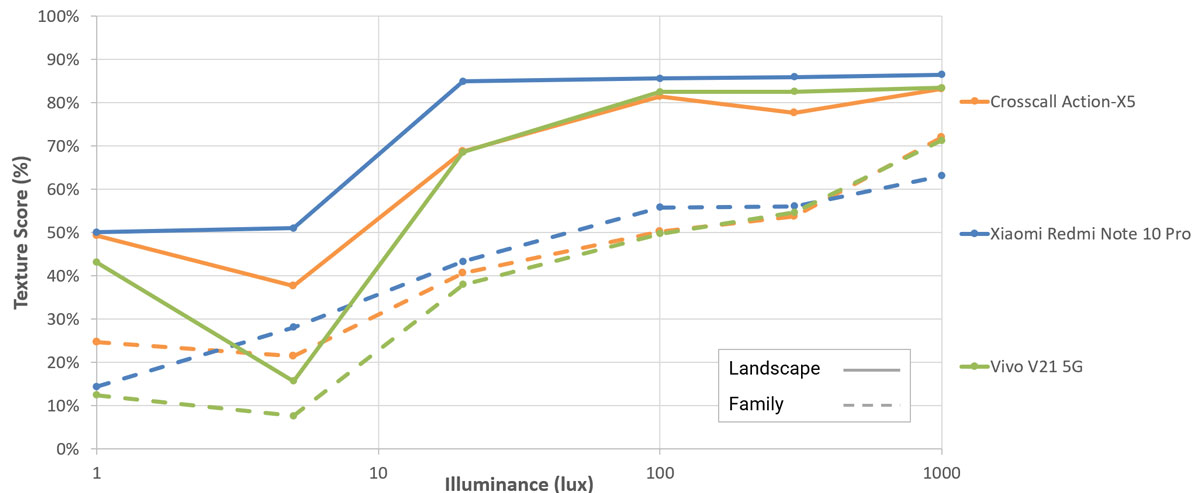
Texture comparison: The Crosscall Action-X5’s measured texture is lower than the competitors’ but still acceptable.
Compared to some of its competitors, the Crosscall applies very little processing to its images. As a result, the preview image on the display is very close to the final result. The Action-X5 lacks a bokeh mode, removing the need for simulating the effect in preview.
Preview: very close to final capture
The Action-X5 does not come with a dedicated tele lens but features an ultra-wide camera that allows you to squeeze more of the scene into the frame than the primary shooter. Image quality leaves room for improvement, though. Dynamic range is limited, with clipping often visible for bright and shadow tones and with visible color fringing.
Ultra-wide: underexposure, strong lack of detail, artifacts, including color fringing
Given the lack of a tele lens, tele-zoom images lack detail. Dynamic range is limited, too, and many images show highlight and/or shadow clipping. In addition, tele images show strong color fringing, distortion, and noise.
Medium range tele, crop: lack of detail, noise
In terms of video quality, the Crosscall is mainly held back by an unstable exposure and autofocus. As you can see in the clip below, exposure is very unstable and the autofocus has trouble tracking the subject. Our testers also observed frequent focus breathing. White balance is quite decent in bright conditions and indoors, but becomes an issue in low light as well.
Crosscall Action-X5, strong exposure instabilities, unstable autofocus
Vivo V21 5G, slight exposure instabilities, autofocus oscillations
Xiaomi Redmi Note 10 Pro, slight exposure instabilities, autofocus oscillations



 224th
224th 35th
35th

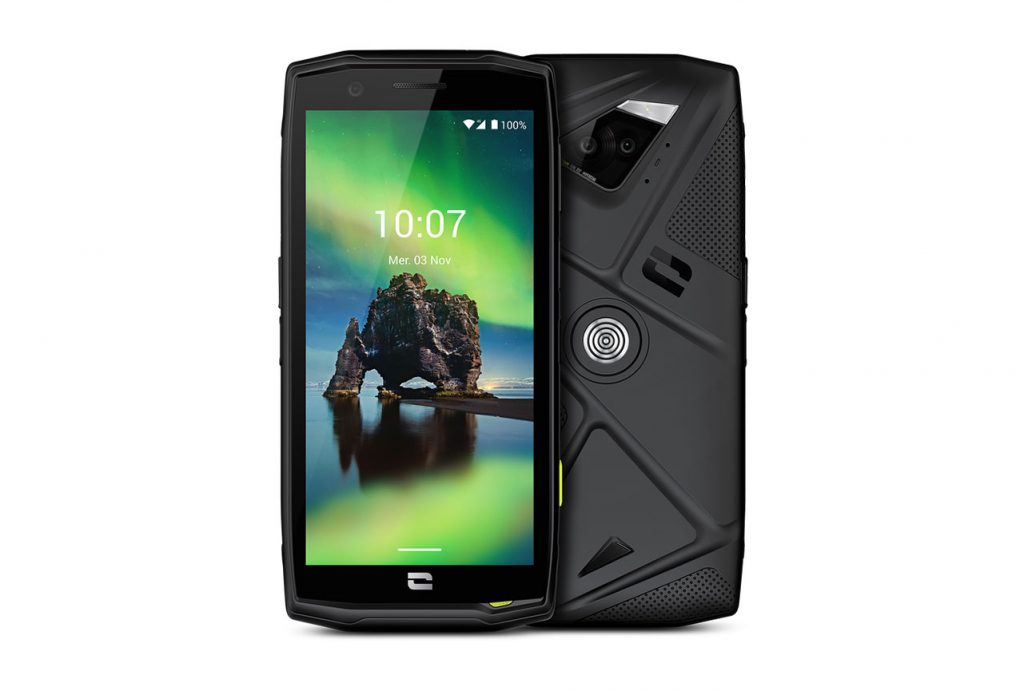


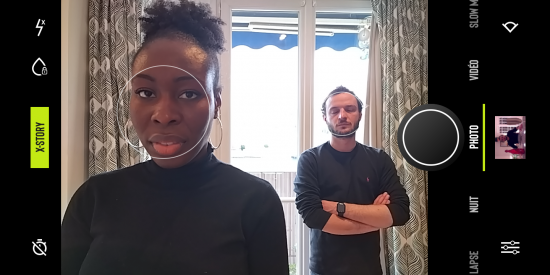
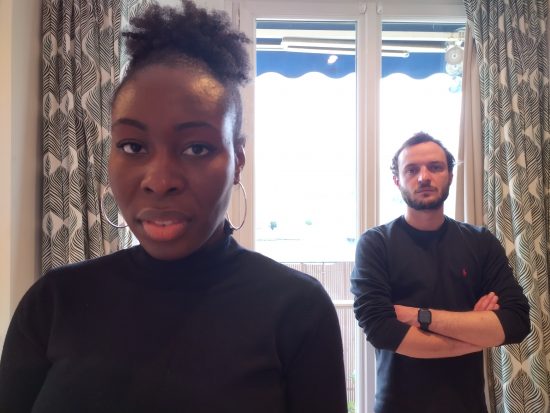
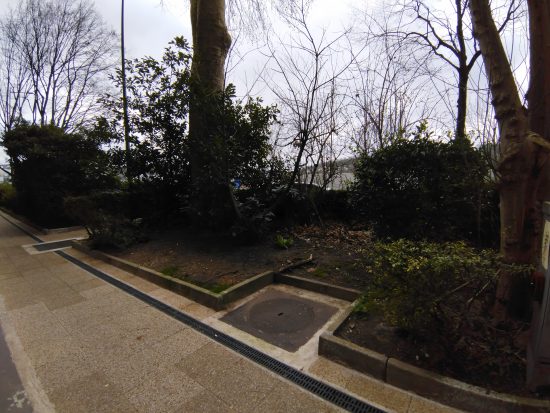

DXOMARK encourages its readers to share comments on the articles. To read or post comments, Disqus cookies are required. Change your Cookies Preferences and read more about our Comment Policy.